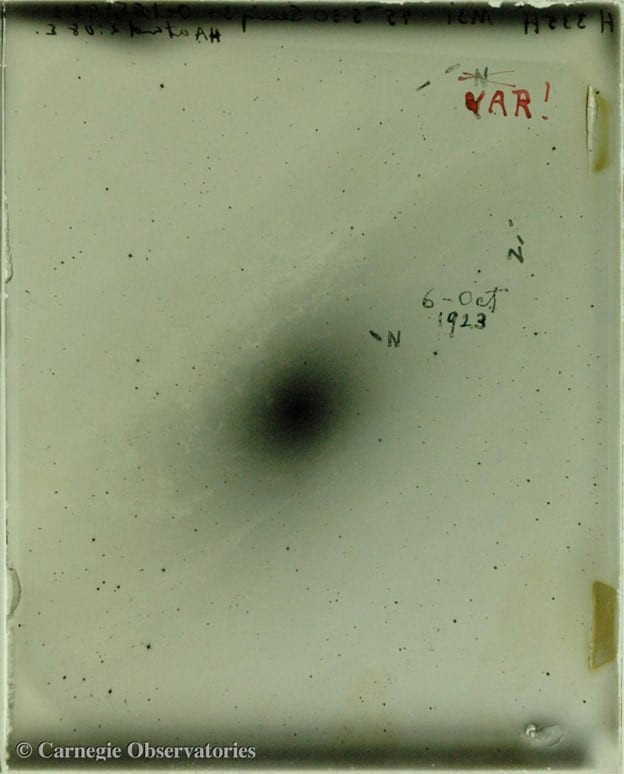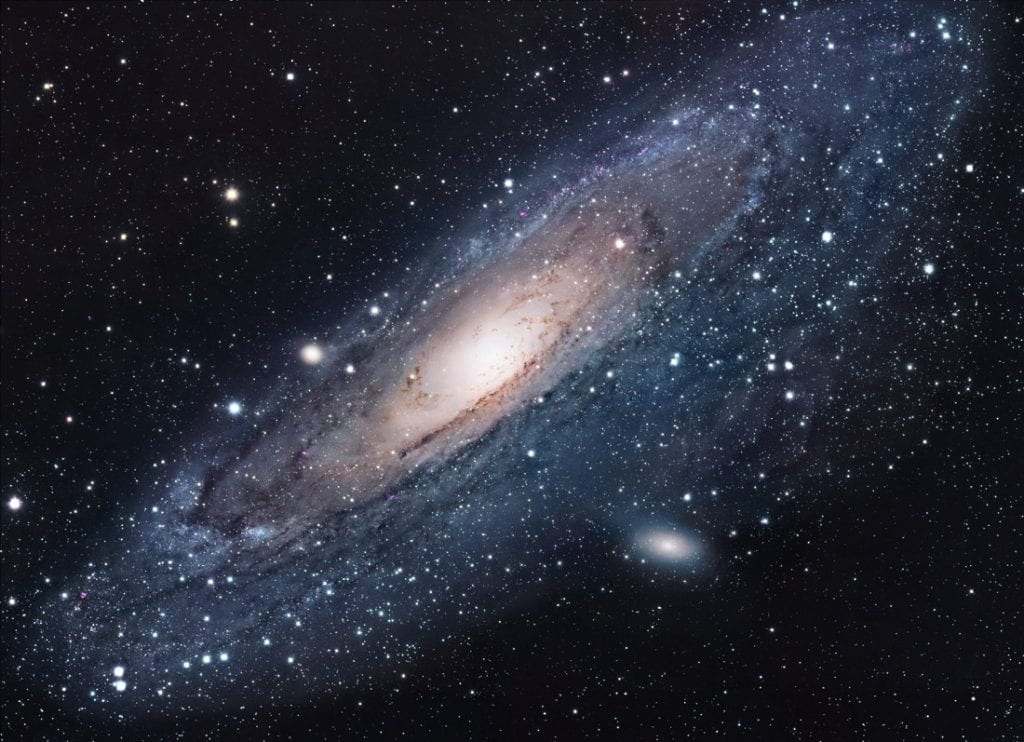While today we know that we are one of trillions of galaxies, it was only a little over a century ago (in 1920) that “The Great Debate” happened. Astronomers gathered to argue on the nature of galaxies and if the universe was only our galaxy. Some argued there were other “island universes” (an early term for other galaxies) and the “spiral nebulae” telescopes could make out in the night sky were similar objects extremely far away, while others thought they were a part of our galaxy. There was evidence for both sides due to assumptions made from lack of understanding and poor data collection. However, it was settled by Edwin Hubble later that decade: Hubble looked at our nearest galactic neighbor, the Andromeda galaxy, and measured the brightness patterns of a special kind of variable star, Cepheid variables. The basics of Cepheids are that they brighten and dim in a regular pattern, and that the longer it takes for the star to complete one brightness cycle, the brighter the star. Hubble was able to find the approximate distance to Andromeda using these stars, and found it was too far away to fit in our galaxy.

While studying more Cepheids in other galaxies, Hubble and others realized something interesting about their spectra (spectra are seen as the “fingerprint” of elements and compounds because the same atom will always give off the same spectral lines). A continuous spectrum is just a rainbow of colors, but certain elements will absorb (or emit) certain colors and always those colors. This can then be used to identify what elements and compounds are in sample, be it a star, galaxy, or even a gas in a lab. But when they looked at other galaxies’ spectra, they noticed that the familiar lines of known atoms were redshifted, and that farther away galaxies were more redshifted than close ones. Redshift is quite literally light shifting to the red part of the spectrum – the wavelength increases, which makes objects appear redder as red light has longer wavelength than blue light. You’ve likely experienced something similar – the Doppler effect. Simply put, when a source of sound moves away from you, the sound waves appear further apart, which causes their wavelength to decrease. A siren will sound higher pitched as it moves toward you and will sharply decrease in pitch as it moves away. It isn’t exactly the same, as the light doesn’t change speed due to the laws of general relativity, but instead it changes wavelength. Hubble and the others found that the spectral lines were redshifted for every galaxy, and the further away the galaxy the larger the redshift. He plotted the recession speed (the speed at which galaxies are moving away from us) against distance and found a linear relationship. The slope of this line is known as the Hubble constant, and it is around 65 kilometers per second per megaparsec in distance (a megaparsec is approximately 3 million light years), meaning a galaxy 1 megaparsec from us will be moving away at 65 km/s, and one double that distance is moving double that speed, and so on.
Why are these galaxies moving away from us in every direction? Are we special? Not quite, the galaxy is just expanding in every direction. A convenient analogy is to think of the expansion of the universe as the expansion of a loaf of raisin bread dough as it is put in the oven. The raisins are the galaxies, and the dough is the empty space between galaxies. As bread rises the dough expands, which makes the raisins move away from each other. Each raisin would notice all the other raisins moving away from them but see themselves as stationary. The dough between them, their “Universe”, is expanding. Our universe is expanding as well, so every other galaxy also sees us as moving away.
We live in an immense, expanding universe. To me, it is amazing that in just over 100 years, we went from arguing if the entire universe was just the Milky Way and taking photo plate images of other “spiral nebulae” to taking beautiful images of these other galaxies so far away.
